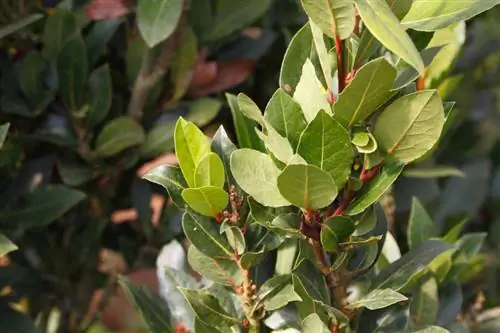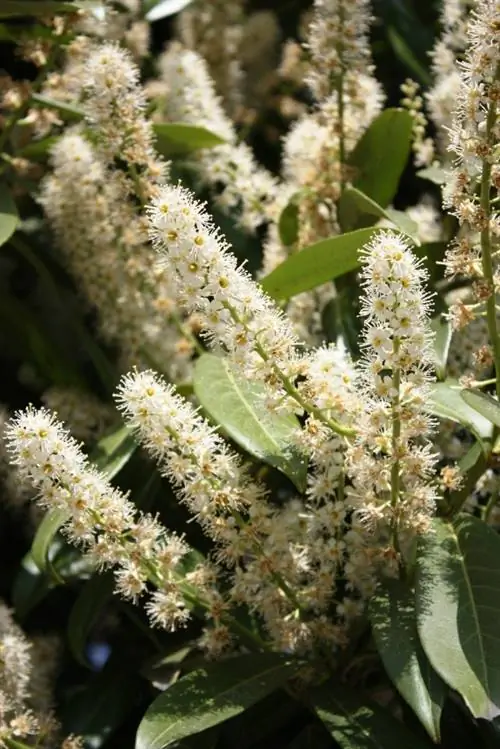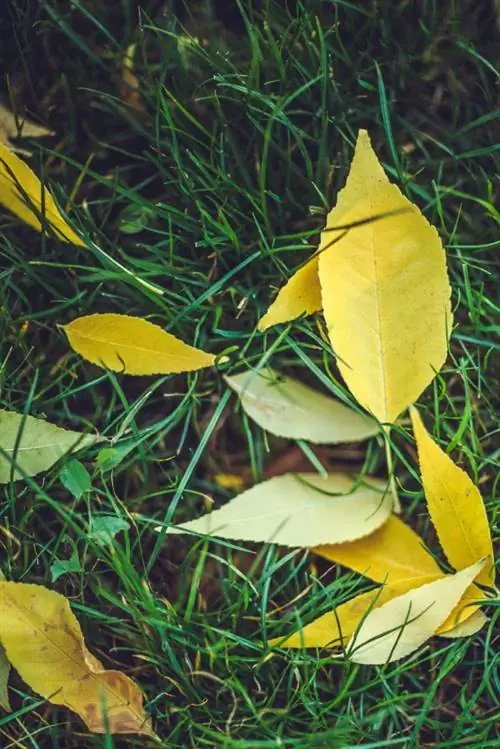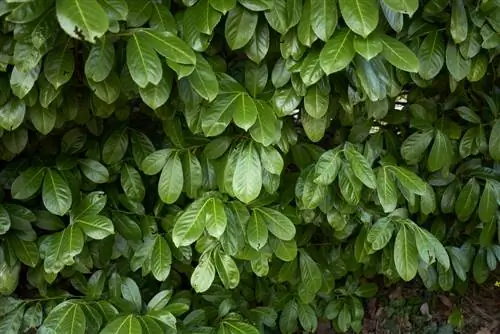- Author admin [email protected].
- Public 2023-12-16 16:46.
- Last modified 2025-01-23 11:20.
If the leaves of the laurel cherry become brown and dry, there can be various reasons for this. We would like to help you find out the reason and give you suitable treatment measures.

Why does the cherry laurel get brown leaves?
Brown leaves on cherry laurel can be caused by frost damage, drought, incorrect pruning, diseases or pests. Prevent these problems with winter-hardy plant protection, proper watering, mechanical pruning tools and timely treatment of fungal infestations.
Damage caused by frost or drought during the winter months
Not all varieties of evergreen laurel cherry are completely hardy. Frost damage often only becomes apparent in the following spring, when the leaves of the tree turn brown and dry out. Since cherry laurel evaporates a lot of moisture through its leaves on sunny winter days, drought damage is not uncommon. The frozen soil makes it impossible for the plant to compensate for the loss of fluid.
Cut frozen or dried shoots back deep into the he althy wood. As a preventative measure, you should provide the laurel cherry with sufficient winter protection in very harsh areas. Water the tree on frost-free days.
Error while cutting
If you use motorized scissors when cutting the laurel cherry hedge, you will injure a lot of leaves unnecessarily. The edge of the leaf turns brown, the foliage dries up and is subsequently thrown off the plant. Therefore, when pruning the cherry laurel, only use mechanical cutting tools (€14.00 on Amazon).
Diseases and pests
If the foliage of the cherry laurel shows small reddish-brown spots that are shed by the plant after a while, it could be shotgun disease. It is caused by a fungus that multiplies explosively, especially in wet summers, and can lead to the complete death of the plant.
If the infestation is light, it may be enough to cut off the affected leaves and collect fallen leaves from the ground. Destroy the plant parts in the household waste, as the fungus survives in the compost and spreads again in the garden when the fertilizer is applied. For more severe infestations, the shot is treated with sprays of fungicides, which are repeated once or twice at intervals of fourteen days.






